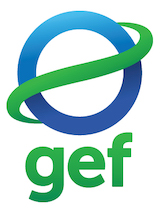Indonesia- Second National Communication
Project Overview
The creation of a National Communication offers countries the opportunity to contribute with technically sound studies and information that can be used for designing mitigation and adaptation measures, and project proposals that can and will help increase their resilience to the impacts of climate change. Activities generally include: V&A assessments, Greenhouse Gas Inventory preparation, Mitigation Analysis or Education, and awareness raising activities.The ultimate goal is the integration of climate change considerations into relevant social, economic and environmental policies and actions.
Key vulnerabilites identified in Indonesia's Second National Communication (2010):
- Agriculture
- Water Resources
- Forestry
- Coastal zones and marine ecosystems
- Public Health
Project Details
Potential Adaptation Measures identified in Indonesia's Second National Communication (2010):
Agriculture
- Improvement of water management, irrigation scheme, soil and fertilization management including organic fertilizer and development of carbon efficient farming
- Development of early, drought, salinity and inundation tolerant crop varietes
- Development of farming risks insurance against adverse climate
- Cropping pattern adjustment by preparation and dissemination of guidance and tools as dynamic cropping calendar and flood and drought naticipation blue print
Coastal zones and marine ecosystems
- Development of dike sequipped with polder system to protect area behind the dike
- Mangrove rehabilitation in an effort to increase soil surface and reduce wave energy destruction so that the rate of erosion can be reduced; and
- Practicing fish culture using sylvofishery.
Public Health
- Improvement of the disease ecology surveillance system and development of early warning system for outbreaks;
- Enhancement of capacity building for the government, private sectors, civil society institutions related to the prevention and mitigation of public health aspects affected by climate change;
- Increasing political awareness of the effects of climate change on public health;
- Empowering community health service systems for the prevention and control of diseases;
- Conducting research and developing methods for epidemiology and medicine to break the chains of disease transmissions; and
- Prevention and eradication of contagious and vector-borne diseases affected by climate change.
Key Results and Outputs
- Sustainable development and the integration of climate change concerns into medium- and long-term planning
- Inventories of anthropogenic emissions by sources and removals by sinks of greenhouse gases
- Measures contributing to addressing climate change
- Research and systematic observation
- Climate change impacts, adaptation measures and response strategies
- Education, training and public awareness
Reports and Publications
Assessments and Background Documents
Monitoring and Evaluation
In 1992, countries joined an international treaty, the United Nations Framework Convention on Climate Change, to cooperatively consider what they could do to limit average global temperature increases and the resulting climate change, and to cope with whatever impacts were, by then, inevitable.
Parties to the Convention must submit national reports on implementation of the Convention to the Conference of the Parties (COP). The required contents of national communications and the timetable for their submission are different for Annex I and non-Annex I Parties. This is in accordance with the principle of "common but differentiated responsibilities" enshrined in the Convention.
The core elements of the national communications for both Annex I and non-Annex I Parties are information on emissions and removals of greenhouse gases (GHGs) and details of the activities a Party has undertaken to implement the Convention. National communications usually contain information on national circumstances, vulnerability assessment, financial resources and transfer of technology, and education, training and public awareness.
Since 1994, governments have invested significant time and resources in the preparation, collection and validation of data on GHG emissions, and the COP has made determined efforts to improve the quality and consistency of the data, which are ensured by established guidelines for reporting. Non-Annex I Parties receive financial and technical assistance in preparing their national communications, facilitated by the UNFCCC secretariat.



